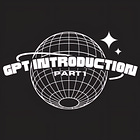From Simple to Complex: GPT - From Answers to Solutions (GPT Introduction Part 2)
5 Practical Tips to Maximize GPT's Potential in Your Content Creation
Hello everyone, I plan to write a series of 10 introductory articles about GPT. This is the second one.
What common problems have you encountered when using ChatGPT? From my conversations with friends, I've identified a few:
How do you write effective prompts? Are there any simple formulas or tips?
What to do when ChatGPT's responses don't meet your expectations?
How do you handle incomplete responses from ChatGPT?
With so many AI tools available, can learning these skills be reused?
Prompts are the instructions given to AI, including tools like Midjourney that generate images from text.
In this article, we will tackle these issues step-by-step, starting with practical examples. Whether you're a beginner or have some experience, this lesson will clarify things for you.
The 5 Elements of Effective Questions
As a leading language model, ChatGPT supports any natural language. Competitors like Claude and Google also offer similar support.
With AI handling language barriers, we can focus on more important questions. Here's a simple formula from the search era that still works:
Keyword / Single Sentence
Two examples:
Keyword: "Bohemian Rhapsody". You ask about the "Bohemian Rhapsody" song topping the charts. The browser suggests "receiving the award" or related results, but only from its existing knowledge.
Single Sentence: "What low-maintenance plants are good for a living room?" This will guide you to various platforms or blog posts about suitable plants, leading you to consider your options.
Times have changed, but the method hasn't. Now we use prompts to find answers, which consist of five elements:
Topic + Quantity + Details + Method + Format





